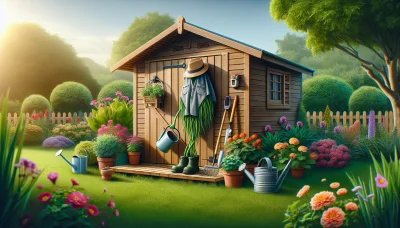Purple sedum Quiz
Test Your Knowledge
Question of
Introduction to Purple Sedum
Purple Sedum, a vibrant and hardy perennial, is a standout in any garden due to its striking foliage and blooms. This plant, belonging to the Sedum genus, is celebrated for its drought tolerance and ease of care, making it a favorite among both novice and experienced gardeners. Its succulent leaves, which can range from deep purples to bright pinks, add a splash of color to rock gardens, borders, and groundcover. Beyond its aesthetic appeal, Purple Sedum plays a crucial role in attracting pollinators such as bees and butterflies, contributing to the health and vitality of garden ecosystems.
Types of Purple Sedum
- Sedum 'Purple Emperor'
- Sedum 'Bertram Anderson'
- Sedum telephium 'Purple Empress'
- Sedum 'Matrona'
- Sedum 'Postman's Pride'
- Sedum dasyphyllum 'Major'
- Sedum spurium 'Dragon's Blood'
How to Plant Purple Sedum
Purple Sedum, also known as Sedum 'Purple Emperor', is a stunning succulent that adds a vibrant splash of color to any garden. To ensure your Purple Sedum thrives, plant it in an area that receives full sun for at least six hours a day. These plants prefer well-draining soil, as overly moist conditions can lead to root rot. When planting, mix in some gravel or sand to improve drainage if necessary. Dig a hole slightly larger than the root ball, place the plant, and then backfill with soil, gently pressing down to eliminate any air pockets. Water the plant thoroughly after planting and then only when the soil is completely dry, as Purple Sedum is drought-tolerant. With just a little care, your Purple Sedum will flourish, adding a beautiful purple hue to your garden.
Caring for Your Purple Sedum
Purple Sedum, also known as Stonecrop, is a low-maintenance, drought-tolerant succulent that thrives in a variety of conditions, making it a popular choice for gardeners of all skill levels. To ensure your Purple Sedum flourishes, it's important to provide it with the right care. When it comes to watering, less is more. Allow the soil to dry out completely between waterings to prevent root rot. This plant loves sunlight, so place it in a spot where it can enjoy at least six hours of direct sunlight each day. As for soil, Purple Sedum prefers well-draining soil. A mix specifically designed for succulents or cacti is ideal, but you can also create your own by mixing potting soil with sand or perlite. Following these simple care guidelines will help your Purple Sedum thrive and add a vibrant touch to your garden or home.
Common Problems and Solutions
- Leggy Growth: This often occurs due to insufficient sunlight. Solution: Ensure your purple sedum is planted in a location where it receives at least 6 hours of sunlight daily.
- Root Rot: Caused by overwatering or poorly draining soil. Solution: Allow the soil to dry out between waterings and improve soil drainage by adding sand or perlite.
- Powdery Mildew: Appears as a white, powdery coating on leaves, typically due to high humidity. Solution: Increase air circulation around the plants and avoid overhead watering. In severe cases, apply a fungicide suitable for succulents.
- Pests (Aphids, Mealybugs): These insects can suck sap and weaken the plant. Solution: Remove them manually or treat with an insecticidal soap or neem oil.
- Fading Color: Purple sedum may lose its vibrant color if it's not getting enough light or is too nutrient-rich. Solution: Ensure adequate sunlight and avoid over-fertilization. A balanced, slow-release fertilizer in the spring is sufficient.
Benefits of Growing Purple Sedum
Purple sedum, with its vibrant foliage and resilient nature, offers a multitude of benefits for both the environment and garden aesthetics. Environmentally, purple sedum plays a crucial role in promoting biodiversity by attracting beneficial pollinators such as bees and butterflies. Its drought-resistant qualities make it an excellent choice for sustainable gardening practices, reducing the need for water and maintenance. Aesthetically, the rich purple hues of its leaves and flowers add a striking contrast to any garden palette, enhancing the visual appeal throughout the seasons. By including purple sedum in your garden, you contribute to a healthier ecosystem while enjoying the beauty and ease of care that this plant offers.
Purple Sedum in Landscape Design
| Design Idea | Sedum Variety | Care Tips |
|---|---|---|
| Rock Gardens | Sedum 'Purple Emperor' | Full sun, well-drained soil, minimal watering |
| Ground Cover | Sedum 'Dragon's Blood' | Full to partial sun, well-drained soil, drought-tolerant once established |
| Border Edging | Sedum telephium 'Matrona' | Full sun, tolerate most soil types, moderate watering |
| Container Gardens | Sedum 'Vera Jameson' | Full sun to light shade, well-drained soil, allow soil to dry between waterings |
| Green Roofs | Sedum 'Bertram Anderson' | Full sun, well-drained soil, low maintenance and watering needs |












